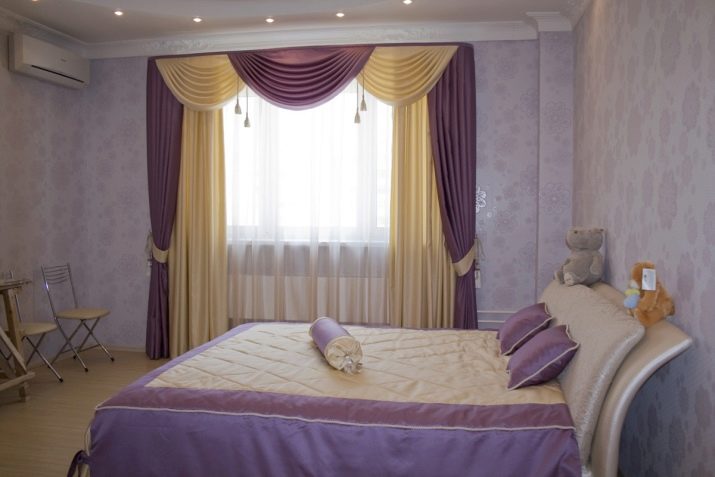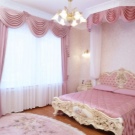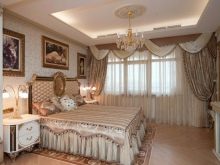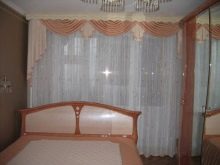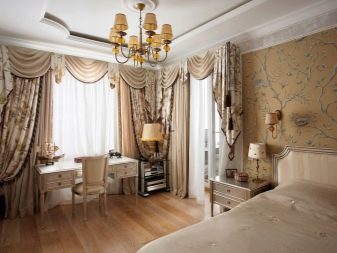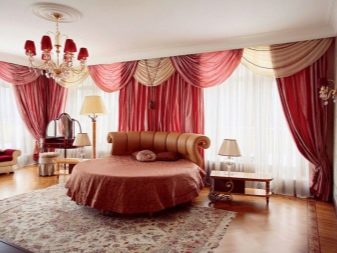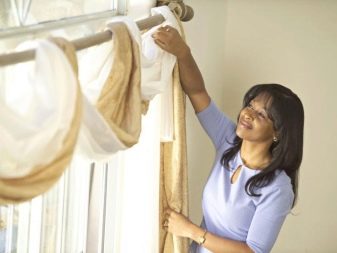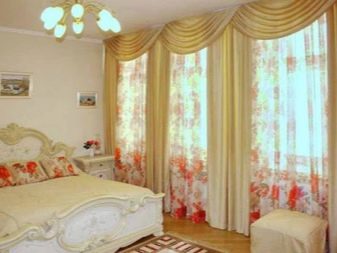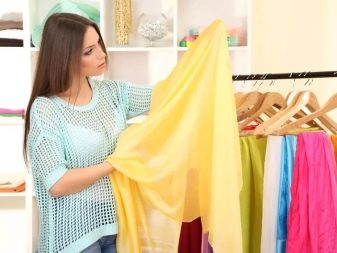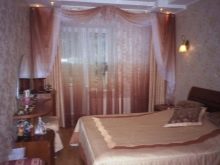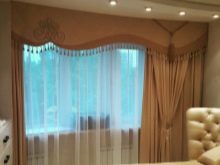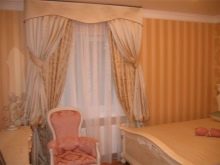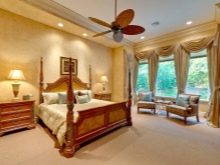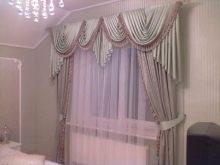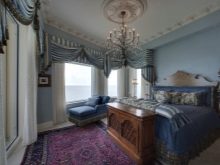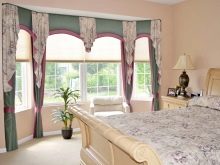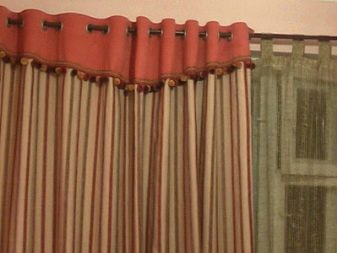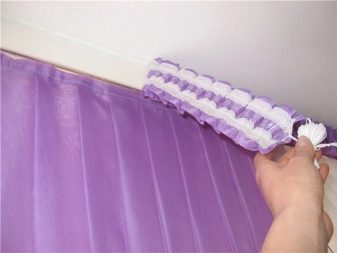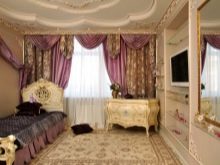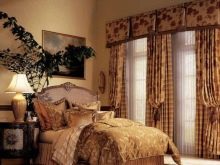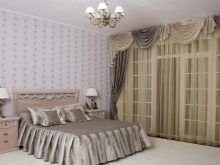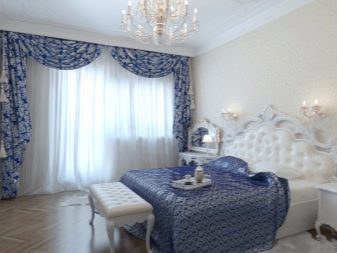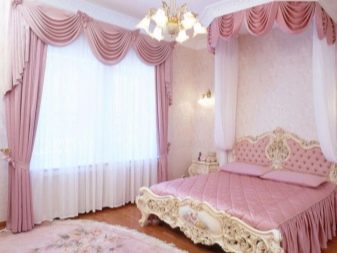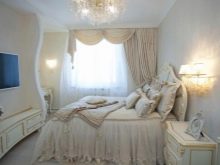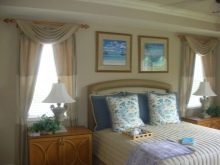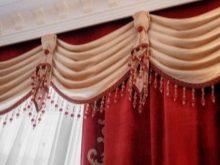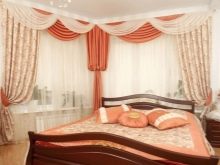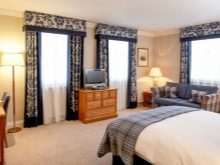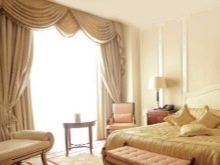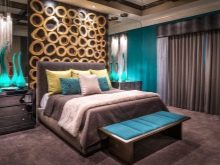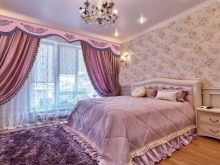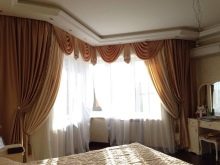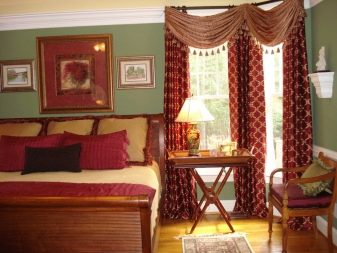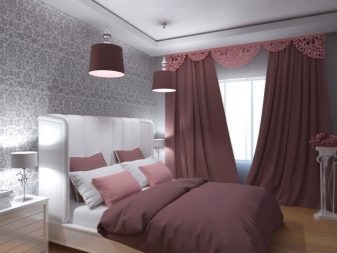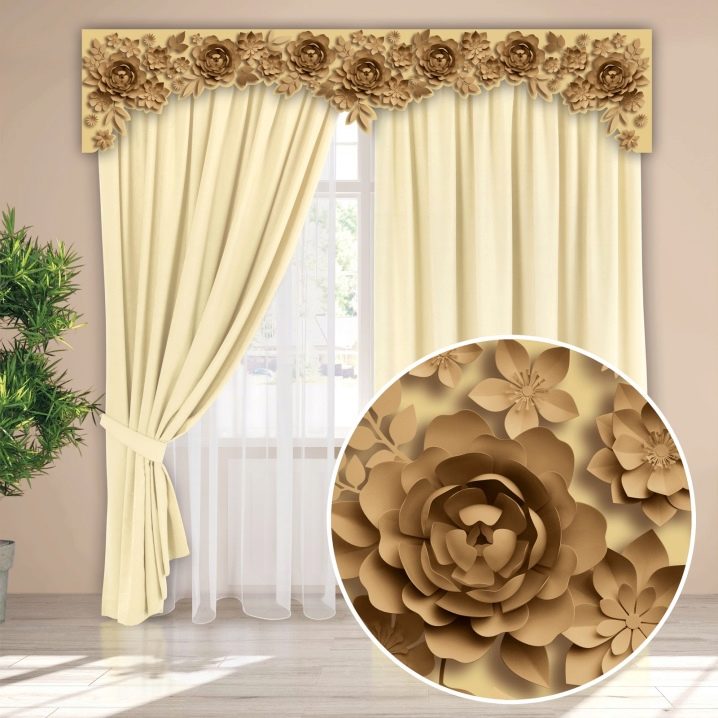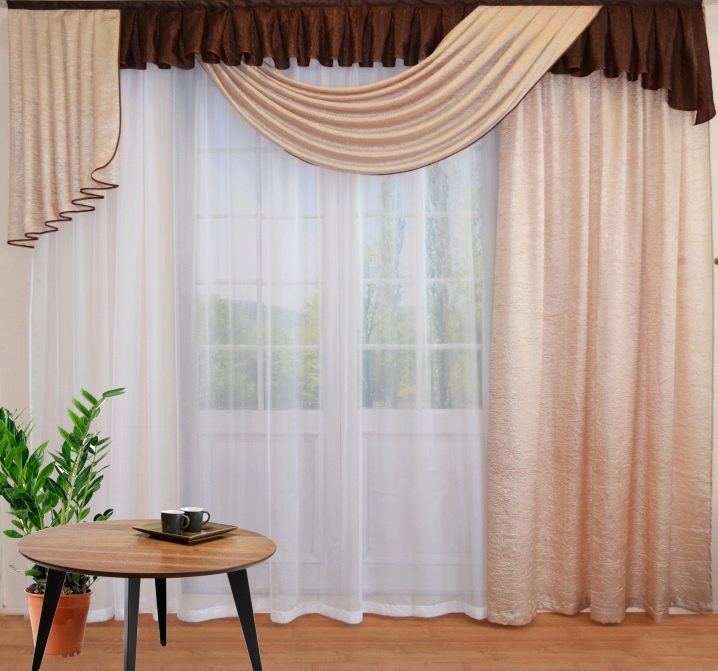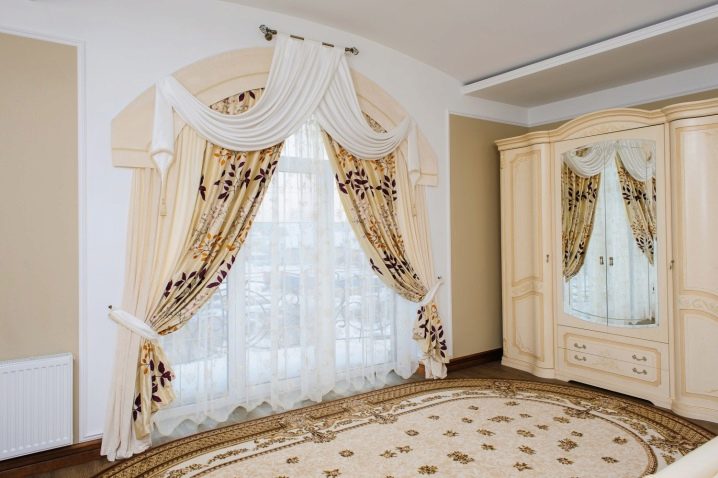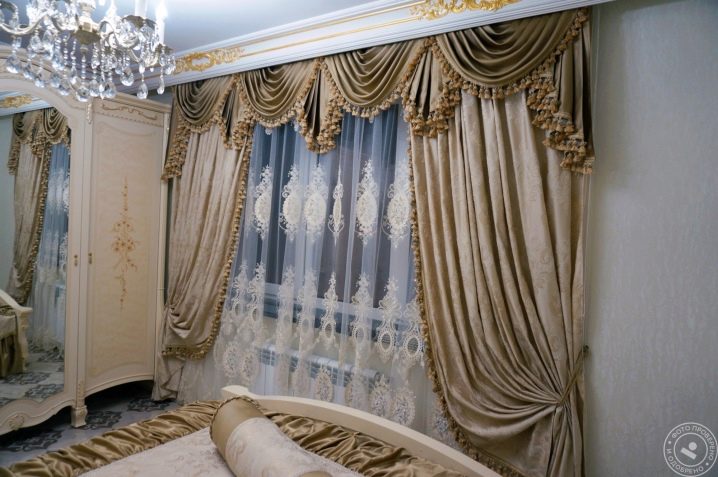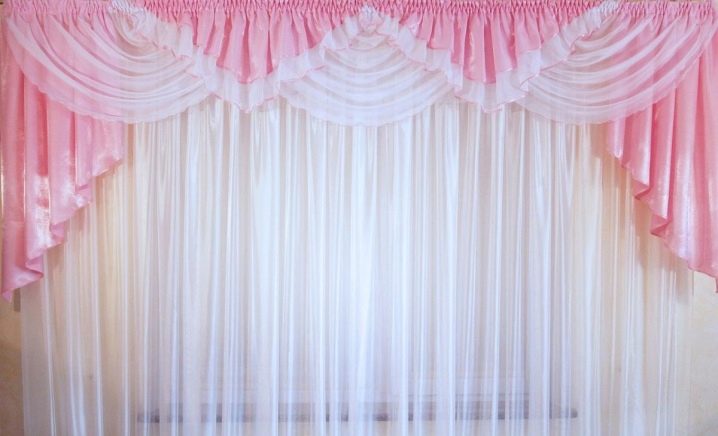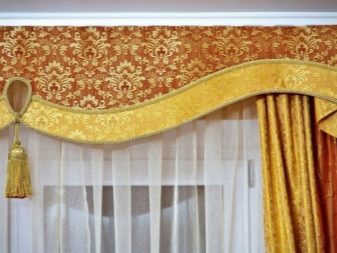Lambrequins for the bedroom
Lambrequins are horizontal draperies, which are located at the top of the curtain composition. The element plays a decorative role. With its help, you can make even the simplest curtains exclusive. Lambrequins are of different types depending on the design, material and color scheme.
Advantages and disadvantages
Lambrequins have repeatedly gone out of fashion, but this option for decorating a window is always considered a classic. Decorative elements have many advantages and few disadvantages. Their disadvantages are mainly associated with the wrong choice of fabric or design. For example, if in a small room on the window there are massive lambrequins made of dense fabric of dark colors, then visually the room may look not just small, but tiny. If the fabric wrinkles too much, then after washing it will be extremely difficult to return the appearance to the decor element.
Advantages of lambrequins:
- give the window a complete look;
- create a special atmosphere in the bedroom;
- versatile and combined with different types of curtains;
- help to close an ugly cornice;
- with their help, you can change the visual form of the window;
- suitable for almost any interior design.
When choosing lambrequins for a bedroom, it is important to pay attention to their design in advance. Some options may be cuts of fabric, which then need to be independently placed on the window in a certain shape. This can be difficult.
The best option are lambrequins, which are a complete design.
Lambrequins are not suitable for window design if:
- the bedroom has very low ceilings;
- the interior of the bedroom is made in the style of minimalism;
- there are too many interior items and all kinds of decor in the bedroom;
- the window is too small.
Some models of lambrequins are difficult to clean. There are varieties that are not recommended to be washed. The cleaning process can only be carried out with a vacuum cleaner. Such a nuance can create serious inconvenience, but it can be excluded in advance when buying or sewing a window element.
The main thing is to pay attention to the design and type of fabric.
Species overview
Conventionally, all types of lambrequins are divided into three main categories - hard, soft and combined options. By design, each of these types has its own characteristics. Some options are made only of dense material, others are made of the lightest fabric possible. A separate category is combined lambrequins, in which several types of canvas can be used at once.
Hard
The best material option for the manufacture of rigid lambrequins is considered to be dense synthetic textiles.
A distinctive feature of such a decorative element is its versatility. It can be combined not only with classic types of curtains and curtains, but also with fabric blinds.
Features of the rigid decorative element:
- complete closure of the eaves;
- holds any shape well;
- can be additionally sealed with cardboard;
- a variety of shapes (from geometric shapes to complex designs).
Soft
This kind of lambrequins is attached to a separate cornice. In this case, the structure becomes motionless. For sewing, fabrics are used that are well grouped into folds. Additionally, this decorative element is most often decorated with ruffles and fringes.
Features of soft lambrequins:
- the side edges always go beyond the borders of the curtains;
- can be made in the form of swags (semicircles) or semi-swags (tie or standard perekid).
Combined
Combined type lambrequins are made of different fabrics. Individual elements most often alternate, but can be arranged in layers. For decoration, brushes, fringes, cords and other details are used.
Varieties:
- chill mold (visually resembles a "skirt");
- puffs (vertical folds and gathers);
- frill (decorative element with a beveled edge).
Any of the varieties of lambrequins can be suitable for different types and sizes of premises. The exact choice of hard, soft or combined option depends on individual preferences. An important role in this case is played by the design of the decorative element.
If the window design includes bright colors, dense fabrics, voluminous lambrequins, then this option is not suitable for a small room.
By the type of fastening, they are divided into the following types:
- tape (separate parts of the decor are connected with Velcro, in rare cases - with glue);
- ties and loops of different sizes (can be in the form of graceful bows, cords or ribbons of different widths);
- eyelets (fastening in the form of rings, can be made of any acceptable materials).
Colors and patterns
The color scheme of lambrequins can be absolutely any. They can be made from readily available material or customized. Some companies and individuals offer fabric dyeing services.
Thanks to this opportunity, you can get not only an exclusive color, but also apply interesting prints.
The most requested options:
- combinations of light shades (visually expand the space);
- dark colors (create clear boundaries and can further reduce a small room, suitable for spacious rooms with large-scale windows);
- white options (on their own they look voluminous and gentle, can be combined with any other color);
- fashionable shades are pistachio, milk, caramel, peach, pink, lavender options.
If the room is large, then choosing a window design will be much easier. In this case, you can combine different colors, different designs, use additional decor. Reducing a large space with lambrequins is quite difficult. The situation is different with a small room. It is recommended to decorate the window in the lightest possible colors. Dark options will further reduce the space and ruin the overall visual impression of the bedroom.
Interesting ideas for additional decor:
- flowers - universal decor for any type of fabric, the material may initially have a floral print, flowers can be purchased separately as patches or appliques;
- beads and beads - when decorating with such material, it is important to observe the boundaries, there should not be too many beads, you can decorate the edges of the fabric with beads;
- braid - the most inexpensive and simple option, you can sheathe the edges of the fabric, make bows or loops;
- brushes - the element attracts attention and is able to change the appearance of even the simplest lambrequin, brushes can be made not only in the form of a standard fringe, options from beads or beads look original.
How to choose curtains and tulle?
When choosing curtains with lambrequins, it is important first of all to take into account the design and size of the room. If the decor is chosen correctly, the bedroom will be transformed and will look stylish and elegant. In case of gross mistakes, its appearance will be completely ruined. The room will become small, and the window decoration will look inharmonious.
Nuances:
- combined curtains are suitable for a classic interior (rather massive curtains, light and transparent tulle, lambrequins to match the curtains or individual interior items);
- ethnic style (curtains of the brightest and boldest colors are suitable, the material can be any);
- modern fashion (the main condition is the harmonious combination of all elements of the window decor).
Curtains, tulle and lambrequins are a single structure. You can combine fabrics of different densities, colors and varieties, but the main thing to avoid is the effect of overloading the window. If the bedroom is large, then there will be no problems with choosing a lambrequin. The main thing is not to make them too narrow or short. Against the background of a common space, they can get lost from sight and become invisible.
The main purpose of such a decorative element is to be a bright decoration not only for the window, but also for the room as a whole.
Nuances:
- if the lambrequin is made of dense fabric, then the tulle should be as light and transparent as possible;
- decorative elements from flowing fabrics are combined only with curtains and tulle from the same lightweight materials;
- to add brightness, you can combine fabrics of opposite shades (the main nuance is the correct placement of colored elements).
Examples in the interior
It is extremely difficult to divide lambrequins into certain types, depending on design solutions. This decor element allows you to embody almost any idea. Lambrequins can be not only in the form of geometric shapes, but also resemble animal figures, lace, complex compositions. For this, the fabric is sealed with cardboard. You can cut a lambrequin of any shape from such a blank.
For many years, asymmetric lambrequins do not lose their relevance. They always look interesting and original. In the manufacture of decorative elements, you can use any type of fabric.
Folded and arched lambrequins are not only versatile, but also beautiful. They are made from different materials, and such design elements can be combined with almost any interior.
Lambrequins with tassels or fringes look elegant and stylish. If fabrics of noble shades are used in their sewing, then the interior can turn into a royal mansion in the literal sense.
White, light pink and lavender curtains visually expand the space in the bedroom and always look festive. The option is ideal for a small space.
Thanks to lambrequins with decorative elements, you can create any atmosphere in the bedroom. Gold ornament, for example, can create a real oriental fairy tale in an ordinary room.

